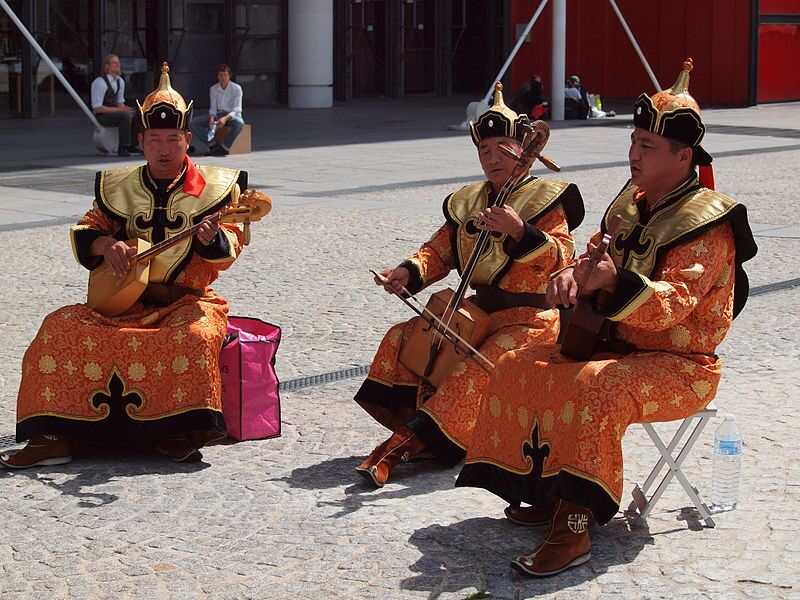Mongol Empire art was quite sophisticated. While the Mongols didn’t produce much literature or fine art during the Mongol Empire, they appreciated and cultivated the arts of the sedentary peoples around them. The Mongol Khans became great patrons of the arts, supporting artists and artisans of all kinds. While not artists themselves in the traditional Mongolian culture, once peace was established in the Empire, all the Khans and sub-khans protected and patronized the arts. In fact, the Mongol Empire gave rise to a flourishing of the fine arts, benefiting the literature and decorative and fine arts of all the people they ruled.
Under Genghis Khan, textile workers, architects, stone carvers and jewelers were relocated from the Middle East and Central Asia to Mongolia to create the magnificent works of art desired by the Mongols. Under Ogedai, Genghis’ son and successor, artisans were put to work building and decorating Karakhorum, the Mongols’ capital city. Under Kublai, Genghis’ grandson and Great Khan, the Yuan dynasty of China saw all the arts flourish, from delicate blue porcelain vases to elaborate staged theatrical plays.
During the pax Mongolica, as artists and artisans traveled throughout the Empire, cross cultural influences in the arts took hold. One can see the blue from Afghani lapis luzuli on Chinese porcelains or Persian elements in Golden Horde artifacts. The art motif of the Chinese dragon made its way to European paintings. Thus, while the Mongols didn’t create art, the arts blossomed because of Mongolian cultural protection and patronage.
Mongol Empire Art: Mongolian Music
Of all the arts, the Mongols themselves loved and cultivated music, developing a unique form of singing known as throat singing or khoomi. Khoomi is difficult to explain; it involves using the diaphragm and throat to sing one tone or note and the mouth to sing another one or two. It sounds like one voice singing two or more notes at the same time, both the fundamental base note and a harmonic tone or note on top of that. It is both beautiful and strange with a few notes coming from one voice and a single singer. The bass note emanates from the singer’s throat and the higher, harmonic notes vibrate from the mouth, sometimes sounding like a waterfalls or monks chanting.
A key element of traditional Mongolian music is the Long Song form. Each syllable of each word is drawn out or extended for a long duration. One four-minute song, for example, might only have 10 words, but each syllable of each word is prolonged, with vibrato on the vowels. The long vibrating notes gives these songs a deeply meditative quality that carries over the grand distances of the steppes. Mongolian songs express the singer’s deep feelings for their horses, natural beauty, love of family or the nomadic life. Mongolian herders sing to their herds just as American cowboys sang to theirs.
Long songs may be accompanied by the other key element of Mongolian traditional music, the Morin khuur or horse-head fiddle. These Chinese-derived two-string fiddles have elaborately carved horses’ heads crowning the fiddle. The Morin khuur can sound the deep tones of the cello or it can emulate the neighing of a Mongolian horse. Occasionally a Mongolian flute and other Mongolian string instruments may accompany the Long song or it can be sung a cappella.
This article is part of our larger selection of posts about the Mongol Empire. To learn more, click here for our comprehensive guide to the Mongol Empire.
Additional Resources About The Mongols
Cite This Article
"Mongol Empire: Arts and Culture" History on the Net© 2000-2024, Salem Media.
July 26, 2024 <https://www.historyonthenet.com/mongol-empire-arts-and-culture>
More Citation Information.
